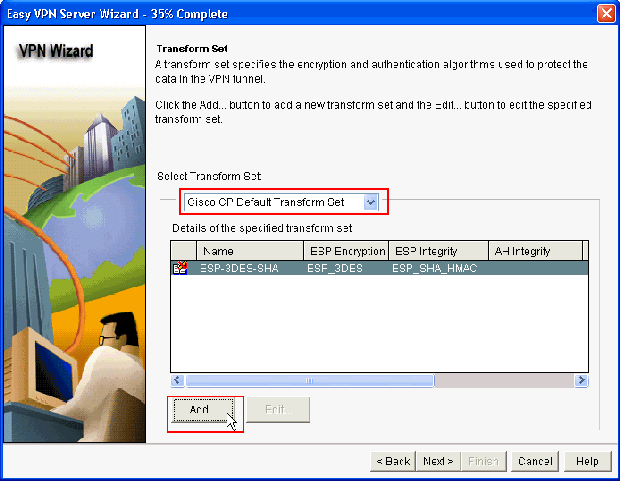
#Cisco vpn setup router password
Type of VPN: Point to Point Tunneling Protocol (PPTP)ĭata encryption: Optional encryption (connect even if no encryption)Īuthentication: Allow these protocols - Unencrypted password (PAP)Ĭonnect again after making the changes above. Right click the network adapter that you have created, go to Properties, select the Security tab and change the settings as below: Select PAP as the authentication method and continue.
#Cisco vpn setup router windows
This is due to the fact that by default Windows is using CHAP/MSCHAPv2 for authentication. You will be prompted for a username and password if you did not enter these on the previous menu. If you do not enter a username and password here you will be prompted to enter these later.Ĭlick Connect on the newly created network adapter "PPTP VPN". Type a Connection name, enter the public WAN IP from your ISP under Server name or address, select the VPN type as PPTP and optionally enter the user name and password here. Go to Settings, VPN and click on Add a VPN connection.
#Cisco vpn setup router how to
The next section will explain how to configure Windows 7 and Windows 10 for PPTP VPN: These are all the steps necessary to configure PPTP VPN on the RV340 routers. It is important to make sure that the selected User Group has been permitted access for PPTP VPN: In this case the default "admin" group is used, however, you can create a separate group specifically for VPN users if desired. Select the User Groups which will have access to PPTP VPN.

In the example below 192.168.1.10-20 is entered, which is part of the default VLAN1 (192.168.1.0/24) and you can see "Subnet range error".įor this example PPTP clients are configured to use the range of 192.168.2.10-192.168.2.20 which is not in use by another VLAN. By default you cannot use subnets which are already in use by other VLANs on RV340/RV345. Select an appropriate pool of IPs for the PPTP clients. The first step is to enable the PPTP Server:

This is an optional configuration and can be configured to the remote peer’s UserFQDN (e.g.

Hello timer: How frequently the concentrator will send OSPF Hello packets.

Router ID: The OSPF Router ID that this concentrator will use to identify itself to neighborsĪrea ID: The OSPF Area ID that this concentrator will use when sending route advertisements.Ĭost: The route cost attached to all OSPF routes advertised from this concentrator. Advertise remote routes: If this is set to Enabled, OSPF will be used to advertise remote VPN subnets as reachable via this concentrator.


 0 kommentar(er)
0 kommentar(er)
